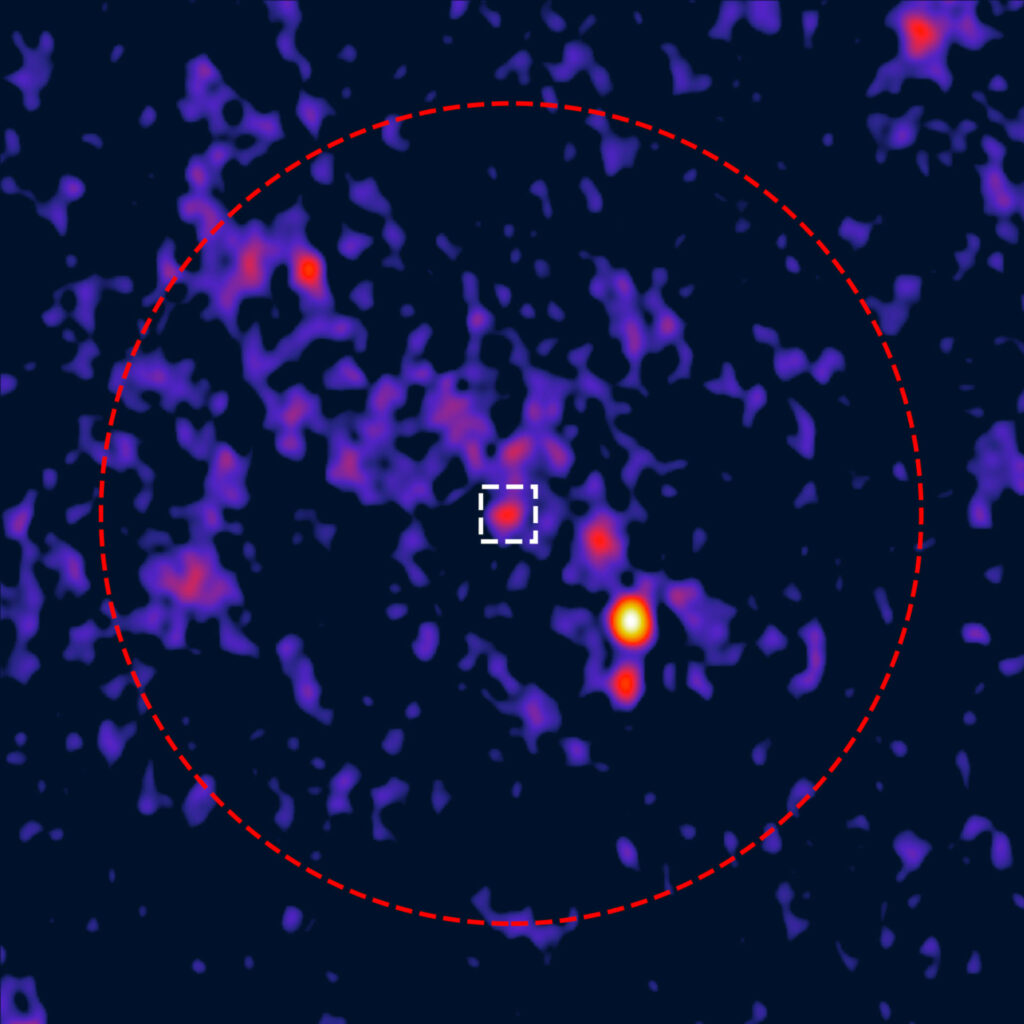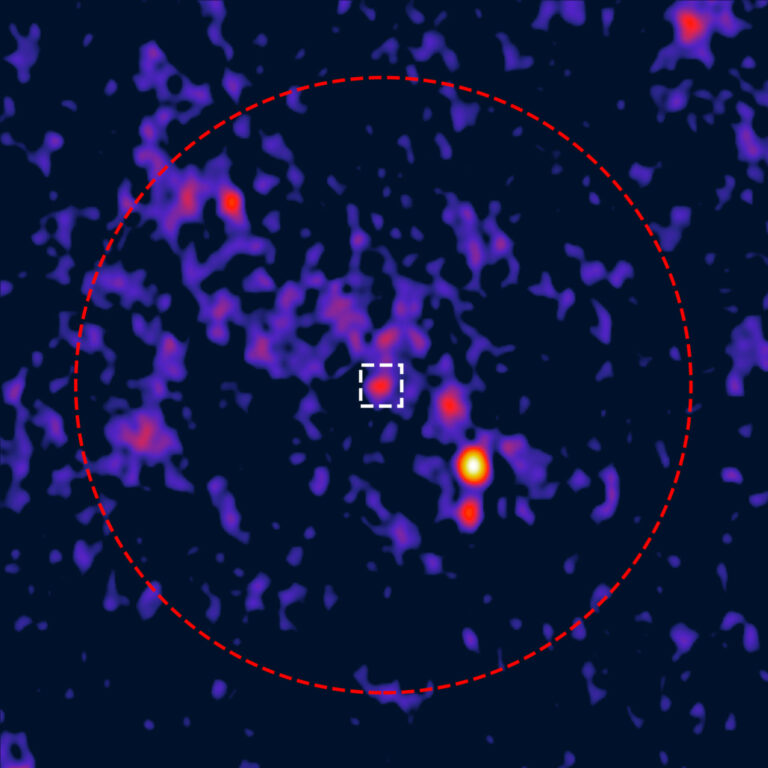Puzzling Radio Signal Originating from Core of Ancient Star Cluster Raises Speculation of a Rare Black Hole Presence
If proven, this has the potential to signify a groundbreaking advancement in astronomy.
New observations have unveiled that one of the brightest globular clusters in the Milky Way is emitting enigmatic radio waves from its core. Scientists speculate that this intriguing signal could be generated by a medium-sized black hole, which would mark a groundbreaking discovery. The team made this remarkable finding while conducting a thorough scan of the 47 Tucanae cluster using the Australia Telescope Compact Array (ATCA) in New South Wales. Globular clusters are ancient collections of stars scattered throughout our galaxy, and the stars within these clusters are densely packed compared to other regions of the Milky Way. For instance, 47 Tucanae encompasses over a million stars within a sphere measuring 120 light-years in diameter. This cluster, the second brightest in the night sky, is even visible to the naked eye. However, after conducting an extensive 450-hour radio measurement campaign with ATCA, researchers from the International Centre for Radio Astronomy Research (ICRAR) have produced the most detailed radio image of 47 Tucanae to date. Within the very heart of the cluster, situated approximately 14,500 light-years away from the sun, they have discovered this peculiar source of radio waves.
The scientists believe that the signal could be generated by either a black hole of medium size or a pulsar, which is a rapidly rotating neutron star emitting radio waves. Both entities are captivating, but the detection of a medium-sized black hole would signify a significant advancement.

Medium-sized black holes serve as the missing link connecting stellar black holes, which are remnants of massive stars, to supermassive black holes. These supermassive black holes, found at the cores of galaxies, can be as massive as millions or even billions of suns. Scientists believe that supermassive black holes have formed through the gradual merging of smaller black holes, although evidence of this process in the universe has been limited.
Alessandro Paduano, the lead author of the study and a former Ph.D. student at Curtin University in Perth, Australia, stated that while intermediate-mass black holes are believed to exist in globular clusters, there has not been a definitive detection of one yet. If the signal observed turns out to be a black hole, it would be a groundbreaking discovery and the first-ever radio detection of a black hole within a cluster.
The researchers emphasized that the image of 47 Tucanae captured by the ATCA (Australia Telescope Compact Array) is as detailed as the highly anticipated images that will be obtained by the Square Kilometer Array Observatory (SKAO). The SKAO, currently under construction in Western Australia and South Africa, will consist of thousands of sensitive radio antennas. Once completed in the coming decade, it will become the world’s most sensitive radio telescope.
Tim Galvin, a research scientist at CSIRO and co-author of a paper on the study, expressed his enthusiasm for the project, stating that it pushed their software to its limits in terms of data management and processing. He also highlighted the significant scientific advancements enabled by these techniques. Alessandro’s research, according to Galvin, represents years of research and technological progress, with ATCA’s ultra-deep image of 47 Tucanae being just the tip of the iceberg in terms of future discoveries.
Arash Bahramian, an astronomer at Curtin Institute of Radio Astronomy, who supervised the project, emphasized the achievement of achieving science of close to SKA-quality using the current generation of radio telescopes. By combining extensive observation hours, they were able to uncover even the faintest details. This success provides a glimpse into the exciting potential of the next generation of radio telescopes when they become operational.
Looking ahead, this technique holds promise in enhancing the capabilities of SKAO, enabling astronomers to detect the most elusive objects in the universe.
The study was published on Jan. 15 in The Astrophysical Journal.
This article is republished from SpaceCom under a Creative Commons license. Read the original article.
Do not forget to share your opinion with us to provide you with the best posts !




0 Comments